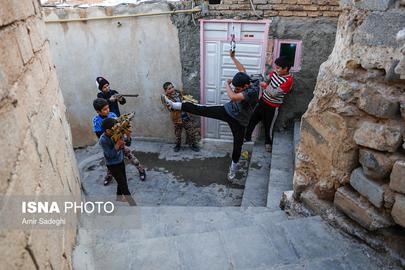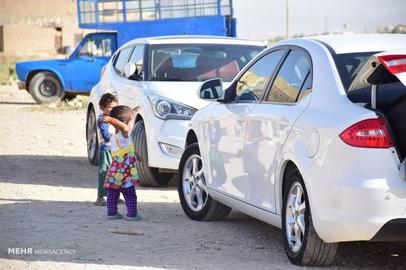What is it like to live on the margins of a metropolis in Iran today? Those who do are confronted with some of the most serious crises facing the country today, with social, economic, political and security repercussions. Various groups and organizations have reported on and collected data about the predicaments of margin-dwelling in Iran but, despite the significance of the subject, the reliable statistics needed for in-depth political, social and economic analyses either do not exist or have not been made public.
This is the fourth in a series of reports on living on the margins in Iran. This installment looks at the cities in the northwestern province of East Azerbaijan and especially its capital, Tabriz.
IranWire will aim to use available statistics and data, as incomprehensive of some of it might be, to arrive at an accurate picture of the phenomenon of living on the margins in Iran and the crises emerging from it.
Introducing Tabriz and East Azerbaijan
For Iran, Tabriz has occupied a place similar to that of Istanbul for Turkey. Istanbul is the cultural and geographic gateway between Asia and Europe, and Tabriz has been the gateway between Iran and the western world. No wonder that the early signs of modernity in Iran first appeared in Tabriz — from the first printing house, the first modern school and the first kindergarten to the first police department, the first municipal government, the first police department, the first women’s society, and so on.
By the same token, the geographical position of the province and especially that of Tabriz has few rivals in Iran. It is in this area that the two mountain ranges of Alborz and Zagros that define the north and the west of the Iranian plateau meet. And unlike the plains of Tehran and Qazvin, the many plains of the province do not border the inhospitable Dasht-e Kavir, the great salt desert in the middle of the Iranian plateau.
But whereas Istanbul is Turkey’s social, cultural and economic center of gravity, Tabriz is overshadowed by Tehran in everything. Even though Tabriz is the sixth largest metropolitan area in Iran, East Azerbaijan’s share of the Iranian economy is no more than four percent. According to a report by the East Azerbaijan Planning and Budget Organization, in 2013 the province’s share of the gross national product (GNP) was 3.5 percent and even if petroleum is taken out of the equation, it only comes to 3.8 percent of the GNP.
According to the Statistical Center of Iran, In 2015, East Azerbaijan’s share of the GNP dropped by around 0.14 percent to 3.37 percent. This puts East Azerbaijan at ninth place for GNP among the 31 Iranian provinces, although most people have the impression that it must be higher.
East Azerbaijan (Source: Google Maps)
Falling Population Growth
According to the 2016 census, close to five percent of Iran’s population, or around 3.91 million people, live in East Azerbaijan. Statistics show that the population growth in this province is less than the national average. Whereas between 2011 and 2016 the population of Iran grew by more than six percent annually, the rate for East Azerbaijan was around four percent.
The urban population’s rate of growth, however, is both different and significant. According to the 2016 census, close to 72 percent of East Azerbaijan’s population lived in cities. This is 10 percent more than the number provided by the 2011 census. In those five years, the rate of urbanization in Iran increased no more than 2.6 percent. In other words, the rate of migration from the countryside to cities in East Azerbaijan was four times the national average.
The urban population of the province, which, according to the 2011 census was around 2.58 million, reached around 2.81 million in 2016. This number shows that within five years somewhere around 23,000 people were added to the province’s urban population, further squeezing the living space in the cities. According to statistics provided by the Ministry of Roads and Urban Development, urban areas in East Azerbaijan cover more than 446 square kilometers, which means that, on average, during the five years between the two censuses more than 500 people were added to each square kilometer and the population density in urban areas reached 6,300 per square kilometer.
Around 55 percent of the province’s urban population, about 1.56 million, live in the provincial capital of Tabriz. In those five years, the city’s population grew by 63,000, and by more than 160,000 in 10 years. In 2016, the population density of Tabriz was around 6,250 per square kilometer. Compared with other cities, this is not too overcrowded; in fact, the figures reveal that the situation is slightly better in Tabriz than in other cities in the province.
Negative Migration
The 2016 census shows a negative migration rate for East Azerbaijan. In the five years from 2011 to 2016, close to 155,000 people migrated to the province, while 174,000 migrants left the province, meaning that East Azerbaijan lost close to 20,000 of its population due to migration.
The statistics for Tabriz show that during the same five years, 80,000 migrated out of Tabriz, while around 54,000 migrated to the city. The latter number includes 30,000 migrants from other areas of the province and 8,000 who migrated from other parts of Tabriz county to the city itself. Based on these statistics, East Azerbaijan and Tabriz can be considered to be exporters of migrants.
These figures and other related factors are strong indications of serious problems in both East Azerbaijan and Tabriz. Considering its geographic location and natural resources, the province should be a destination for migrants, not an exporter of them. Whatever the reasons for this reversal might be, there are visible signs of a crisis: urban decay, unauthorized and substandard housing and margin-dwelling that amounts to people living in shantytowns.
Decayed Urban Areas
According to the latest statistics from the Ministry of Roads and Urban Development, more than 1.03 million of East Azerbaijan’s population live in decayed urban areas. Of this population, 500,000 live in Tabriz. Decayed urban areas in Tabriz cover around 25 square kilometers, second only to Tehran. The other 330,000 people live in 58 other cities, with a total of around 33 square kilometers of decayed urban areas.
Shantytowns and Unauthorized Marginal Dwellings
Based on statistics from 2013, close to 540,000 live in unauthorized housing in East Azerbaijan. These dwellings cover an area of around 36 square kilometers — seven percent of the total of such areas in Iran — of which 20 square kilometers are in Tabriz, with a population of around 400,000. Around 3,000 households are situated in an area smaller than 480,000 square meters.
In the four cities of Maragheh, Marand, Bonab and Mianeh, more than 140,000 people live in shantytowns and unauthorized dwellings on the margins of the cities.
Estimated Population of Poor Housing
According to the latest data, mostly based on the 2011 census, a total of 900,000 people in Tabriz, or around 60 percent of the population, live in inferior housing. If it is assumed that the rate of population growth in decayed urban areas, shantytowns and unauthorized dwellings is the same as in other areas of the city, then currently more than one million people must be living in inferior housing. The corresponding number for the whole province, which was approximately 1.54 million in 2013, must have exceeded 1.7 million by now. This is equal to 40 percent of the total population of the province and more than 60 percent of its urban population.
Victims of Distorted Development
Margin-dwelling is the most visible sign of the unbalanced development of a city, and of a country. But it is clear that there are multiple problems and negative factors at play when a city such as Tabriz is engulfed by worsening urban crises, and when East Azerbaijan’s share of the country’s economy is well below its share of the population — despite the vast variety of its economic and natural resource potentials, and when urban decay exceeds 60 percent of the city.
Tabriz, once Iran’s Istanbul, is now a symbol of distorted and defective development.
Read the full Living on the Margins in Iran series:
Living on the Margins in Iran: An Introduction
Living on the Margins in Iran: Razavi Khorasan
Living on the Margins in Iran: Mashhad and the Cities of Razavi Khorasan
Living on the Margins in Iran: East Azerbaijan
Living on the Margins in Iran: Bandar Abbas and Hormozgan Province
Living on the Margins in Iran: Chabahar and the Province of Sistan and Baluchistan
Living on the Margins in Iran: The Rise and Fall of Khuzestan
Sources in Persian:
ليست و اطلاعات اولين های تبريز, Tabriz Municipality
استان آذربایجان شرقی 1393 گزارش اقتصادی، اجتماعی و فرهنگی, East Azerbaijan Planning and Budget Organization (PDF), 2016
گزیده نتایج سرشماری عمومی نفوس ومسکن 1395, Statistical Center of Iran (PDF), 2017
گزیده نتایج سرشماری عمومی نفوس ومسکن 1390, Statistical Center of Iran (PDF), 2012
گزارش وضعیت مناطق نابسامان شهری و عملکرد ستادهای استانی و شهرستانی, Ministry of Roads and Urban Development (PDF), 2015
چکیده نتایج جمعیتی سرشماری عمومی نفوس و مسکن 1395 – آذربایجان شرقی , Planning and Budget Organization (PDF), Spring 2017
داده ها و اطلاعات آماری – جمعیت و نیروی کار – مهاجرت, Statistical Center of Iran
visit the accountability section
In this section of Iran Wire, you can contact the officials and launch your campaign for various problems

























comments